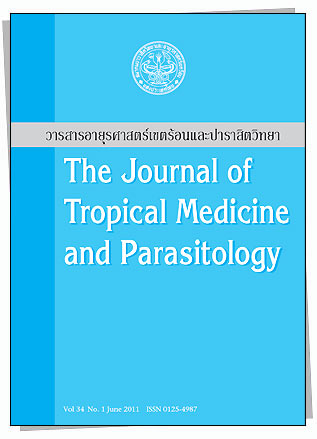Urinary Schistosomiasis among Adults in the Volta Basin of Ghana: Prevalence, Knowledge and Practices
Main Article Content
Abstract
Abstract
Among adults, morbidity due to the pathology of late chronic schistosomiasis infection hasbeen reported frequently. Nevertheless, school-aged children are the main targets ofschistosomiasis-control programs, because epidemiological studies often find infection to be moreprevalent among school-aged children than adults. This study sought to show the importance ofschistosomiasis among adult populations in the Volta Basin of Ghana. A total of 3,301 study subjectswere randomly selected from 30 rural riparian communities on the Afram and Lower Volta Basin ofGhana. Urine analysis was used to determine urinary schistosomiasis infection. Subjects were alsointerviewed using a structured questionnaire to assess their knowledge, perceptions, and practices,in relation to the disease. The results revealed an overall prevalence rate of 46.5%. Communities onthe Afram arm were 2.4 times more likely to be infected with urinary schistosomiasis than those inthe Lower Volta Basin. Gender variation in prevalence was biased towards males (56.5%) comparedwith females (36.9%). Age-stratified prevalence was highest (73.0%) in the 15-19 year age group anddecreased with increasing age to 20.8% among subjects > 49 years. Intensity of infection was generallylow, and egg counts ranged between 1-1,244 eggs/10 ml urine. The arithmetic mean egg count was0.43 eggs/10 ml of urine. Most subjects (53.4%) had no schistosome eggs in urine, 38.1% had lightinfections (≤ 50 eggs/10 ml urine) and 8.5% had heavy infections (≥ 50 eggs/10 ml urine). The studyalso demonstrated a high level of awareness of schistosomiasis as a water-borne disease, but limitedknowledge of its transmission. The symptom, hematuria, was strongly associated with knowledgeof schistosomiasis, whereas educational level was not. The study also revealed actions taken wheninfected included; doing nothing about the condition, self-medication, and visiting health facilities.This research highlights that the prevalence of schistosomiasis among adults is not transient. It isrecommended that the risk groups in Ghana include adult populations in communities on the Aframarm of the Volta.
Keywords: adult schistosomiasis, prevalence, knowledge, Volta Basin, Ghana

